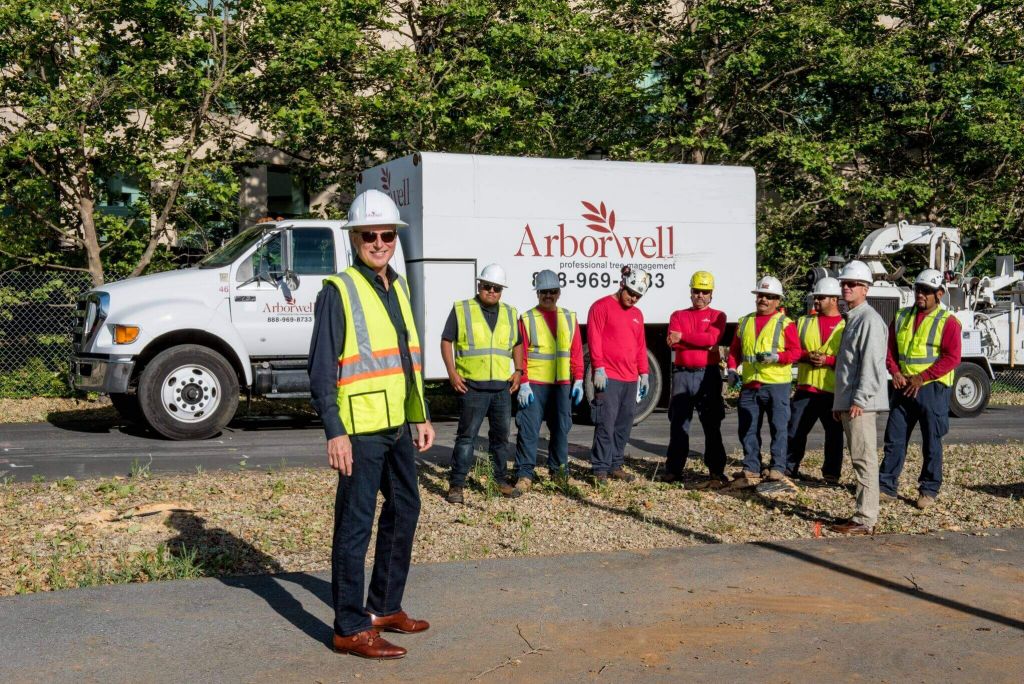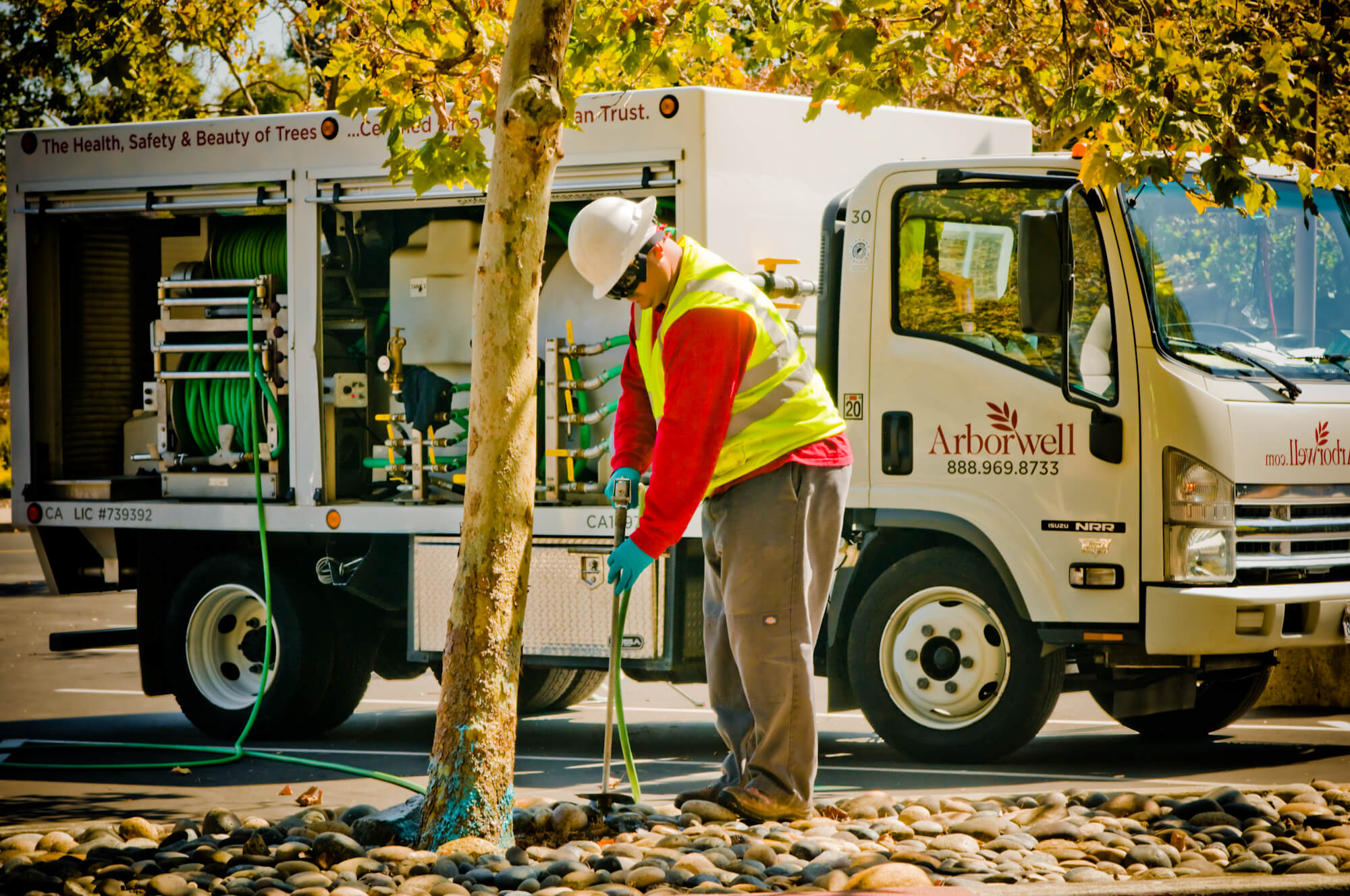Using Spiio to Tackle Dry Winters, Check Salinity Buildup, and Improve Tree Health
Jerry White, plant health manager at SavATree (Arborwell), discusses one of the projects he’s worked on recently and the unique challenges of managing tree health in an area like California. He shares some of the unique benefits of monitoring trees with Spiio sensors.

A few years ago, we had the first opportunity to speak with arborist and Spiio customer Jerry White, the PHC manager at Arborwell. Arborwell, who recently merged with SavATree, is a professional tree management company who primarily operates on the West Coast.
For those that don’t have first-hand experience, there’s a lot involved in managing trees—pruning, tree removal, risk management, and more. Jerry’s role is to manage the operation of plant health care, including fertilization, protecting from disease, reducing insect issues, and improving overall tree and soil health.
In that conversation, we learned how valuable Spiio data was in managing the health of a tree—particularly because of its role in understanding the tree’s need for water intake, which is central to tree care.
Recently, we spoke with Jerry again and were excited that Spiio is continuing to be a part of SavATree’s growing operations. Jerry recently oversaw an installation of Spiios at a corporate campus in the Bay Area where Arborwell manages 19 redwood trees.
19 Spiios for 19 Redwood Trees
The site where the redwoods are, is doing some reconstruction of its landscape, which means that its irrigation has to be turned off. To complicate matters, the trees’ health had already started to decline from the stress of the construction process. We’re tasked with monitoring the overall health of the trees and helping them maintain proper moisture so that they can recover,” says Jerry.
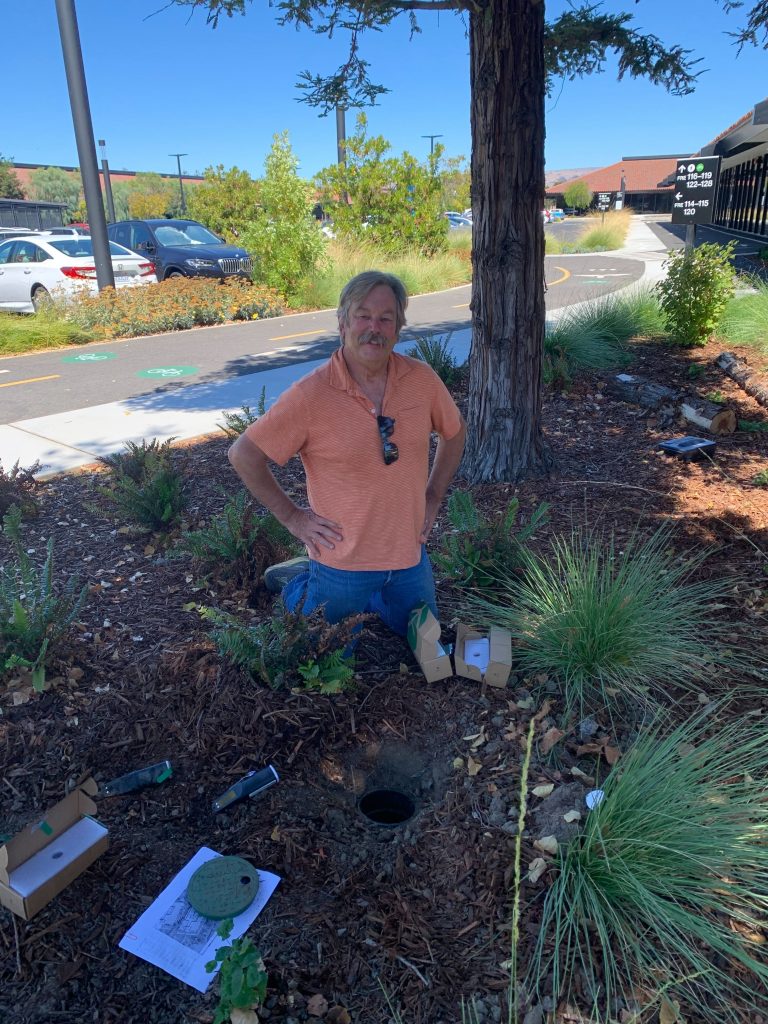
When asked about this big installation, Jerry says it was quite a task. We were training three employees at the same time which further complicated the process.
Spiio is known among its customers for providing support all along the way—installation, troubleshooting, replacements—to make this process as easy as possible. The job was done, and Jerry reports, “we’re really happy with it.
One unit was having trouble, so they had to replace that as well. However, thankfully Spiio is known among its customers for providing support all along the way—installation, troubleshooting, replacements—to make this process as easy as possible. The job was done, and Jerry reports, “we’re really happy with it.”
Using Moisture Readings to Cope with Drought
So, why so many sensors? Depending on the conditions of the tree and its soil, explains Jerry, some trees can be particularly finicky and require more personalized maintenance. “We’ve had significant challenges on the West Coast with dry weather, and especially, most recently, dry winters.”
Many people assume that hot, dry summers are the culprit when it comes to plant stress in drought. In fact, efforts to conserve water often reflect this by restricting water during the winter to save it for the heat. However, that’s actually counterintuitive. Trees in California are accustomed to a Mediterranean climate, including its hot and dry summers. They rely on reserves of moisture built up during the winter, which is why the current pattern of dryer winters is so concerning.
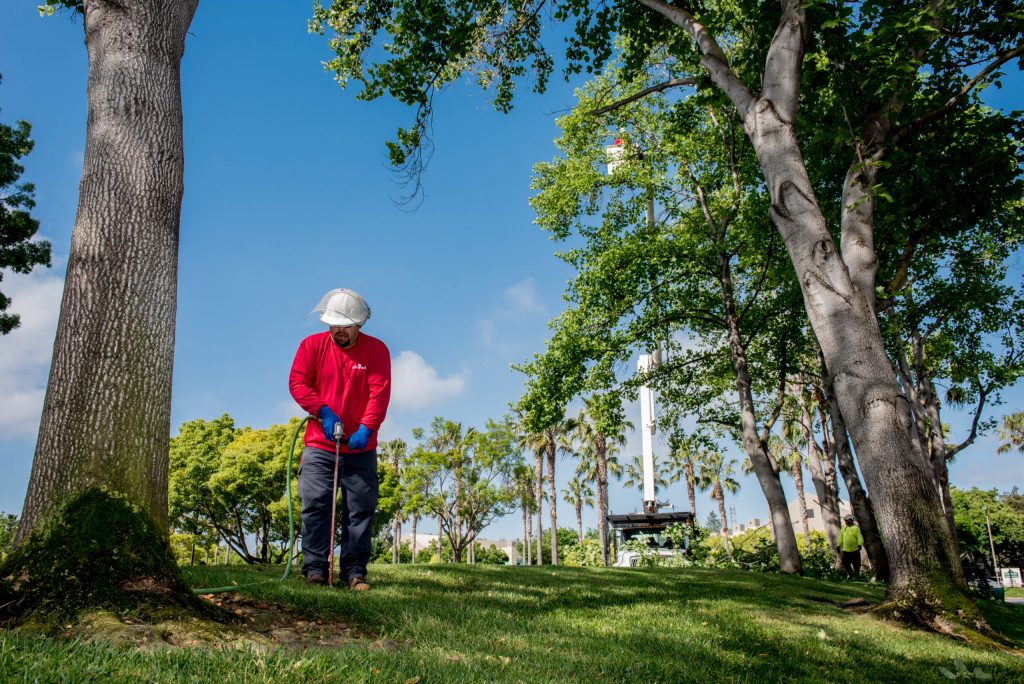
This isn’t a particular issue for the redwoods in the recent installation, but in other projects, SavATree is helping to create a plan to recover trees from drought stress. Spiio data helps monitor those recovering trees that need extra care.
And what about trees that aren’t adapted to the hot, dry Mediterranean climate? Jerry says they want to fine-tune their care for those trees using Spiio’s moisture readings so that they can help customers save water. For instance, they can recommend turning off the water for a couple of weeks at a site that just got two inches of rain. “Those are things we can be developing info on to help clients.”
Using Salinity Readings to Keep Trees Healthy
Spiio’s many features allow it to adapt to the needs of a wide variety of customers. While soil temperature and light readings are key for our many customers managing turfgrass, those aren’t so necessary for SavATree, whose sensors are far underground and operate in a relatively mild climate that only occasionally needs a soil temperature check. However, features like salinity measuring become really valuable in this setting.
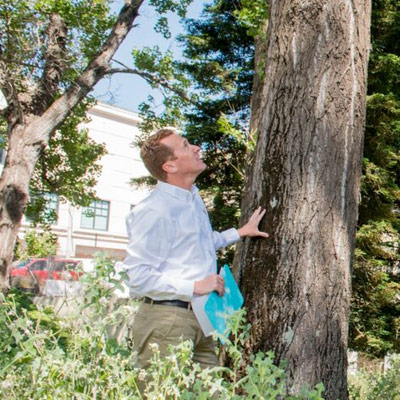
“Another application of Spiio data for tree care is monitoring transplanted trees in a new environment: We have to find out, are these trees salt-sensitive? For example, redwoods are a popular commercial tree on the West Coast because they are so tall and majestic. However, they are not adaptive to high saline soils. Especially during a drought, salt content builds up in the soil and can affect these trees immensely. The salinity measure on the Spiio sensor is helpful to check this.”
Especially during a drought, salt content builds up in the soil and can affect these trees immensely. The salinity measure on the Spiio sensor is helpful to check this.”
Using data from Spiio sensors, SavATree is able to make targeted and efficient agronomic decisions for its trees. For example, if the salinity sensor finds that too much salt is building up for these redwoods, SavATree has several interventions in its toolbox:
“There are certain soil amendments that help reduce salt that we can recommend and apply, depending on the Spiio readings. We can incorporate specific products into the soil to reduce high saline sites. We can also flush the soil through with water, or we might add calcium if there’s a calcium deficiency since that also helps reduce sodium.”
Gathering Data for Long-term Agronomic Decisions
Data isn’t just a short-term benefit for tree health. “The climate always is changing, and California’s noted for always having variable weather,” notes Jerry. “Gathering data over a long period of time is one of my goals so we can compare information. Being able to monitor the information that Spiio units provide makes the process much easier.
The climate always is changing, and California’s noted for always having variable weather, notes Jerry. “Gathering data over a long period of time is one of my goals so we can compare information
So, it’s not just about recognizing and addressing immediate needs of the trees they manage—it’s also about using that information over time to inform long-term decisions and recommendations for clients. That’s why long-time Spiio customers like SavATree are continuing to look for new ways to utilize the value of in-ground data.
Tree health has broad implications. Not only does it impact the aesthetic of a landscape, but dying trees also present a safety and liability risk. We also know how valuable trees are in contributing to an area’s environmental, physical, and mental health. Combining years of experience and expertise with timely and easily-accessible data allows SavATree to do its important work, both for its clients and for the communities where their trees live.
